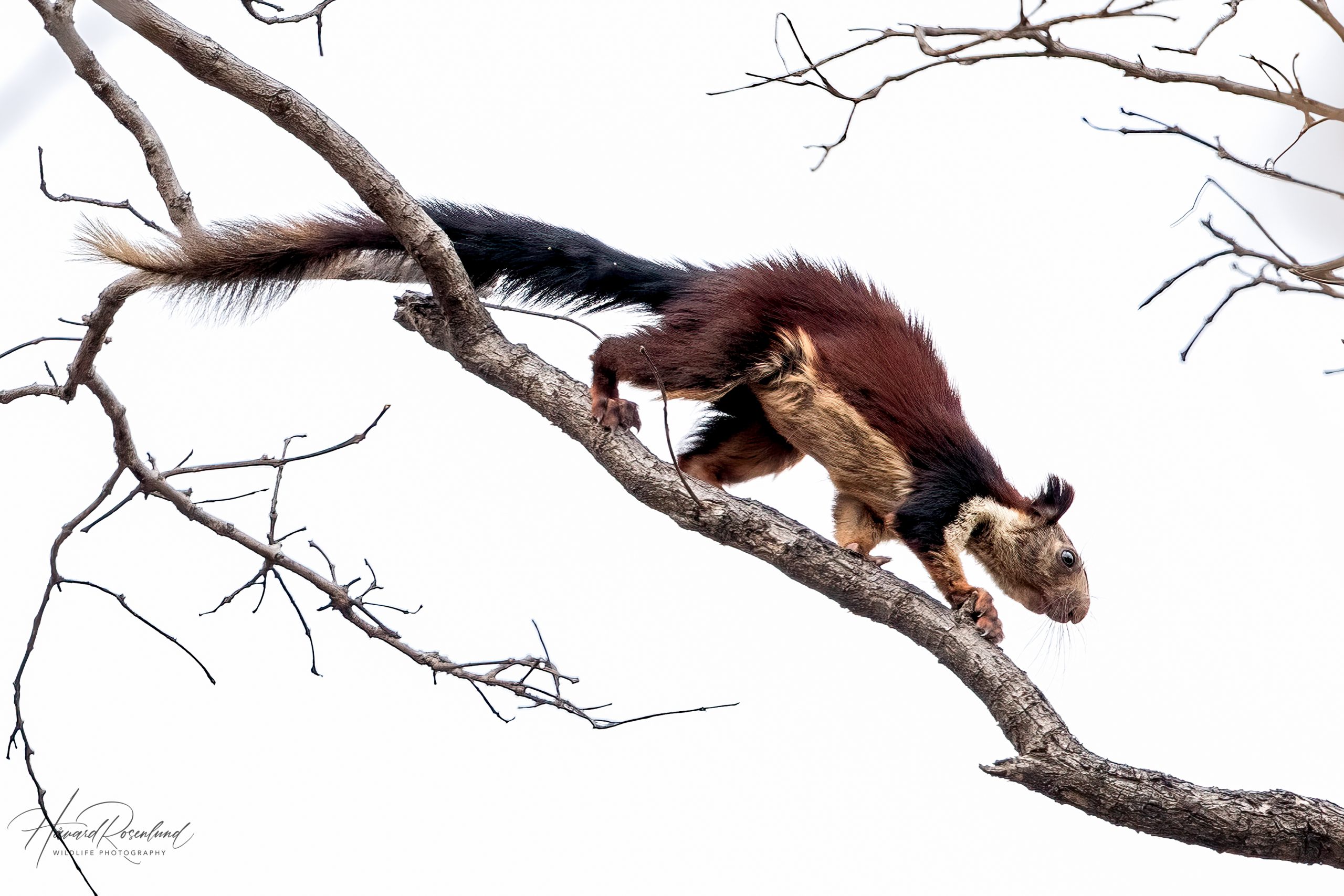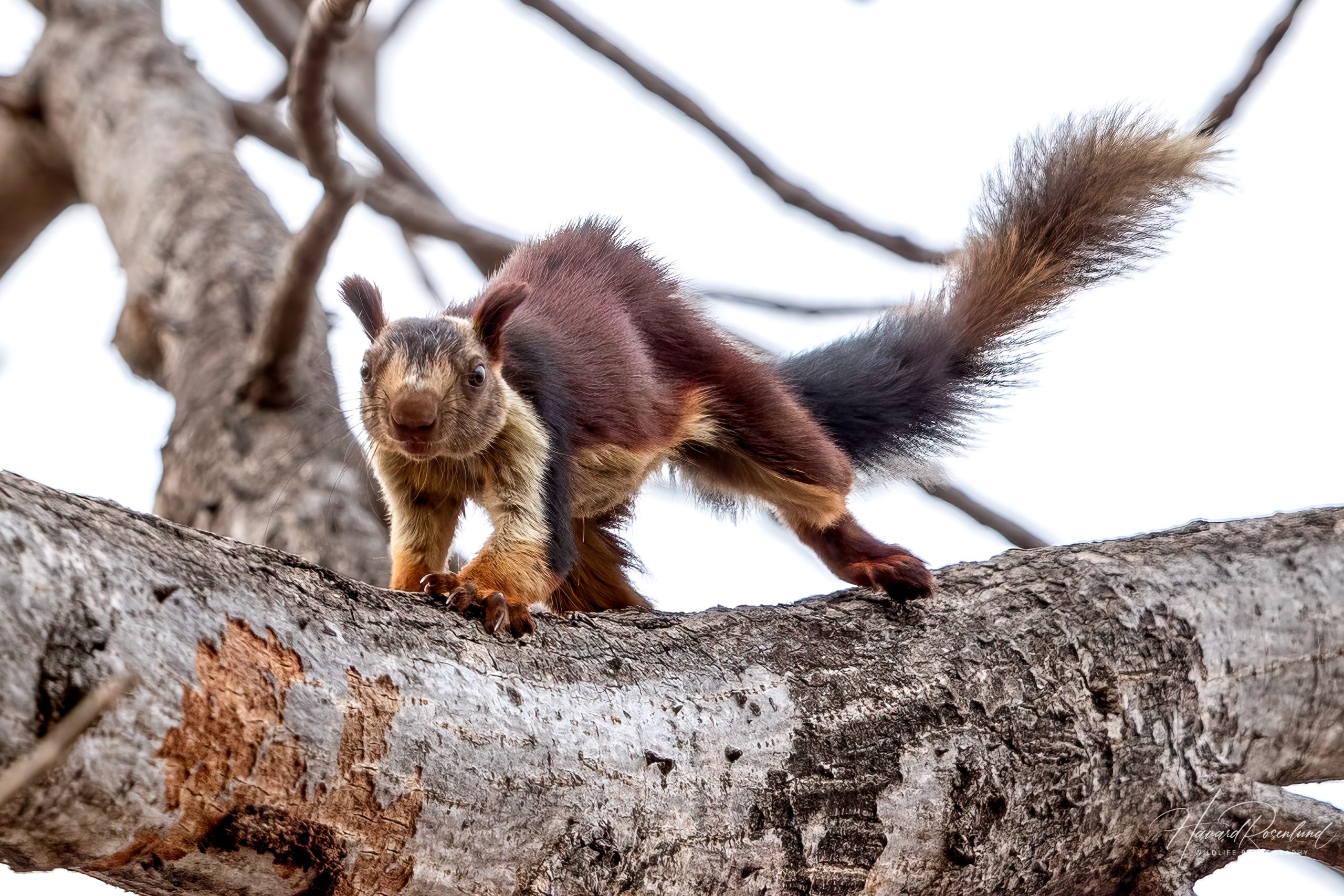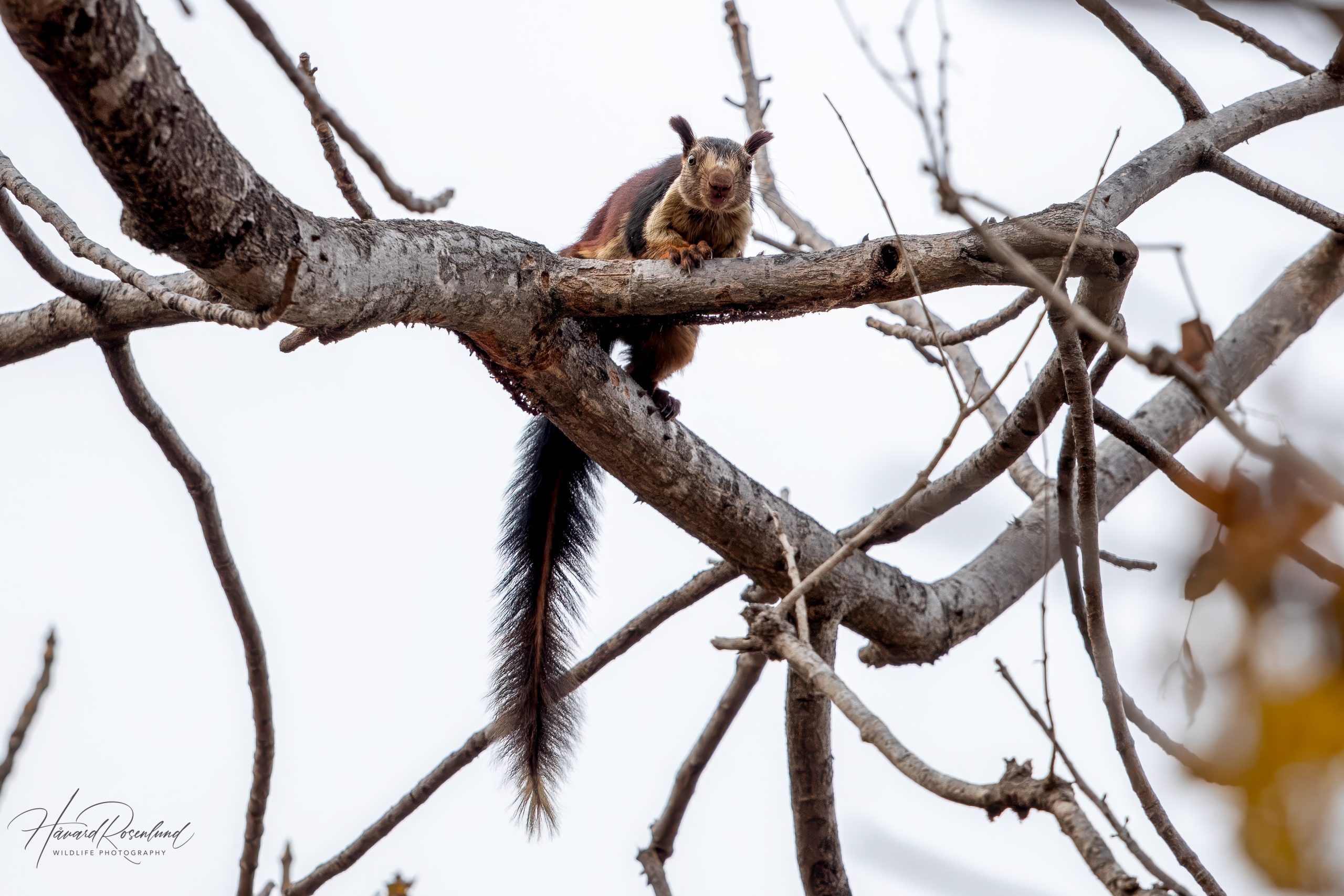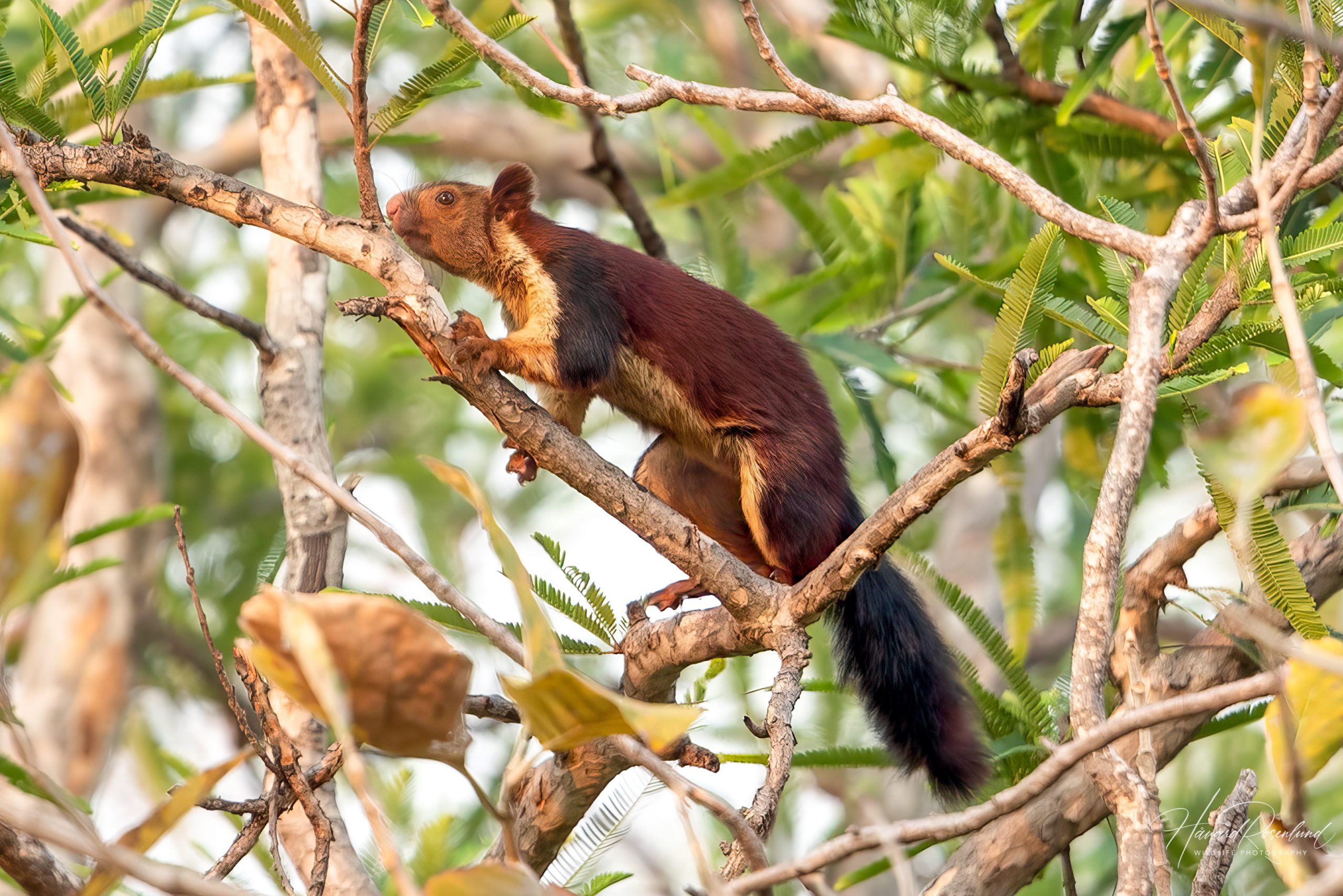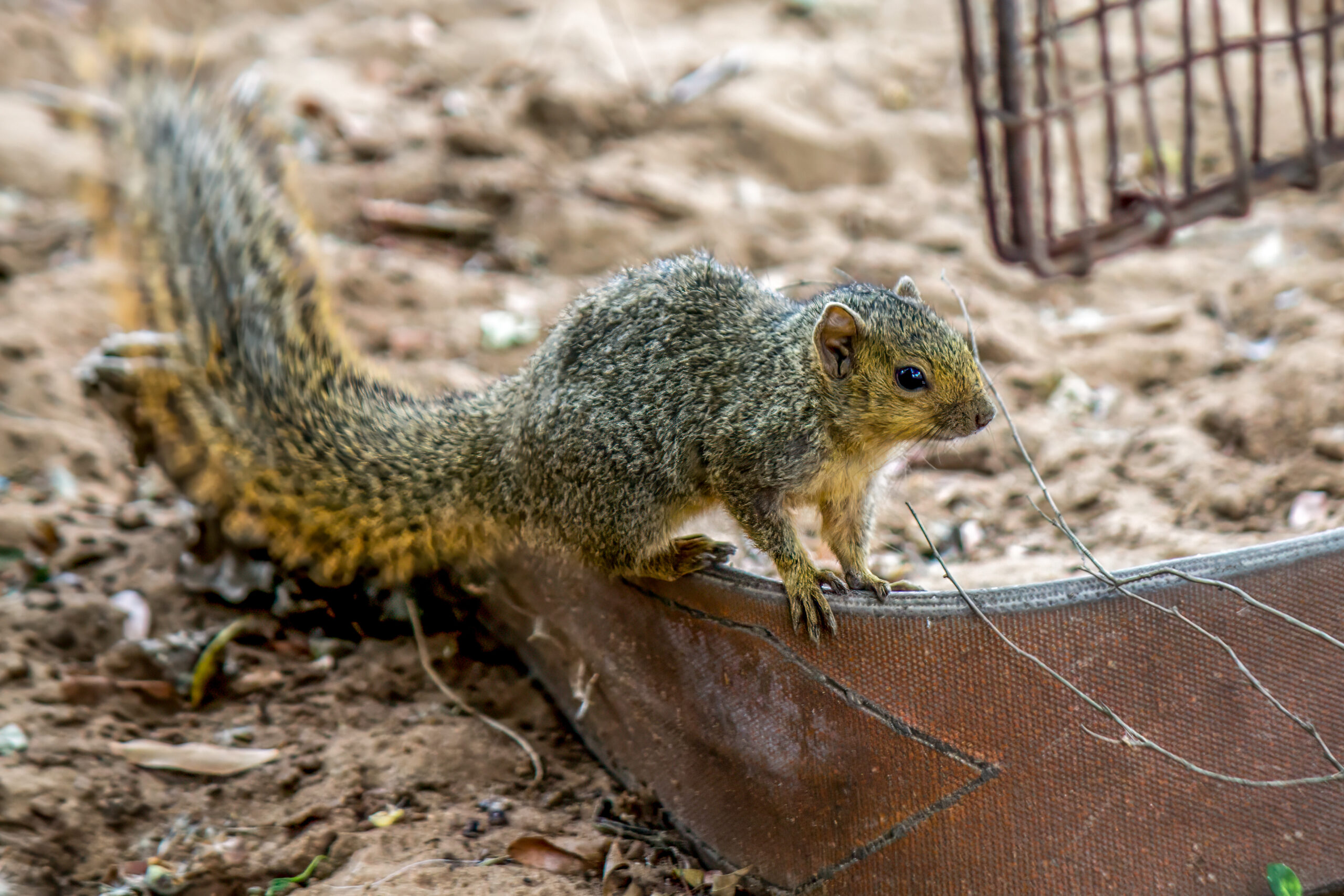Description
The Indian giant squirrel (Ratufa indica) is a colorful and large tree-dwelling squirrel endemic to India. It is notable for its impressive size, measuring up to 65 cm (25 in) in body length with an equally long tail, and it can weigh between 2 to 2.5 kg (4.4-4.9 lbs). This squirrel’s fur is typically a vibrant blend of colors, including deep maroon, brown, cream, black, and sometimes even shades of purple. There is some variation between subspecies. This coloration not only makes it one of the most visually striking squirrels but also helps in camouflage among the dense canopy foliage. Its large size and coloration makes it easy to tell apart from other squirrel species.
Diet & habitat
The Indian giant squirrel inhabits moist deciduous, semi-evergreen, and evergreen forests. It is primarily arboreal, spending most of its life in the treetops, rarely descending to the ground. This species thrives in dense forests where it can easily leap from tree to tree.
Its diet mainly consists of fruits, nuts, seeds, and flowers. It occasionally feeds on bark, insects, and bird eggs. The Indian giant squirrel is known for its habit of storing food in tree hollows and other secure spots, which ensures a steady supply during periods of scarcity. It uses its strong, sharp claws to strip bark and access hidden insects or sap.
Behavior
The Indian giant squirrel is diurnal, being most active during the early morning and late afternoon. It is a solitary animal, typically seen alone or in pairs during the breeding season. Its arboreal lifestyle is supported by its agility and powerful limbs, allowing it to make leaps of up to 6 meters (20 feet) between trees.
This squirrel communicates through a series of vocalizations, including chattering and loud alarm calls to alert others of potential danger. It is also known for its impressive nest-building skills, creating large, spherical nests from twigs, leaves, and bark high in the treetops, which serve as shelter and protection from predators.
Reproduction
The Indian giant squirrel typically breeds twice a year, with the primary breeding seasons occurring from February to April and again from August to October. During the breeding season, males engage in displays of agility and vocalizations to attract females. After mating, the female constructs a secure nest where she will give birth. The gestation period lasts about 28 to 35 days, resulting in the birth of one to three offspring. The young are born blind and helpless, relying entirely on the mother for nourishment and protection. Weaning occurs at around 6 to 8 weeks of age, but the young may stay with the mother for several months before becoming independent. The life expectancy of the Indian giant squirrel in the wild is approximately 15 to 20 years.
Status
The Indian giant squirrel is currently classified as least concern on the IUCN Red List, but it faces threats from habitat destruction and fragmentation due to logging and agricultural expansion. Protected areas and wildlife sanctuaries within its range provide some level of protection, but continued efforts are needed to ensure this species does not move towards a more threatened status.




